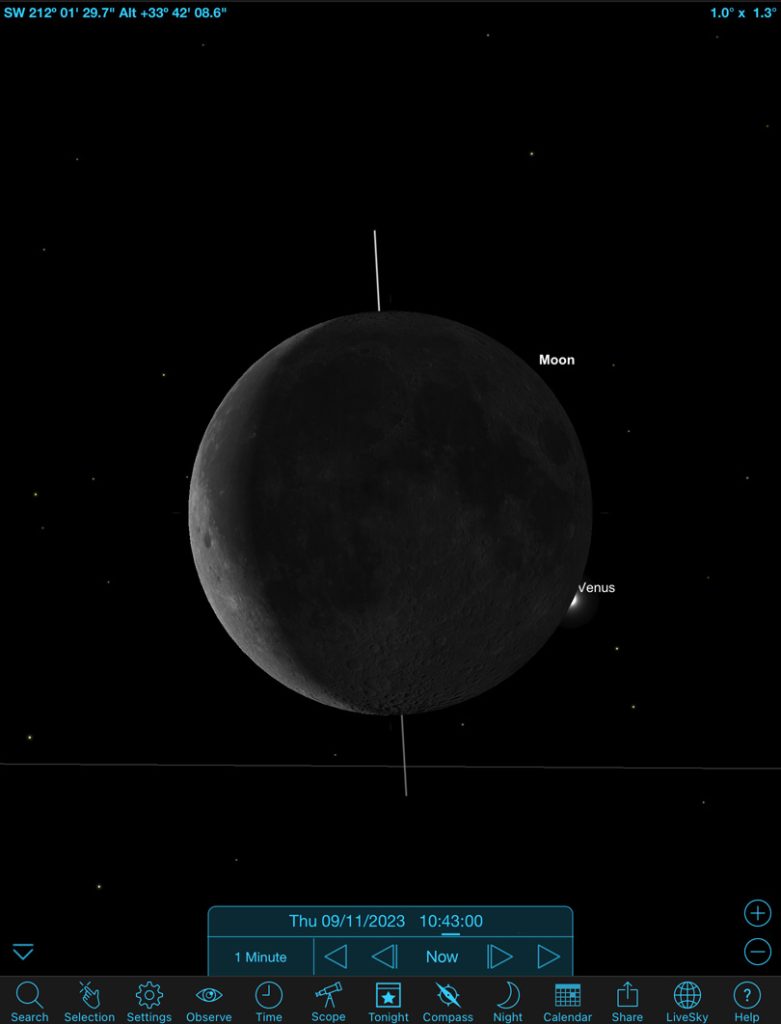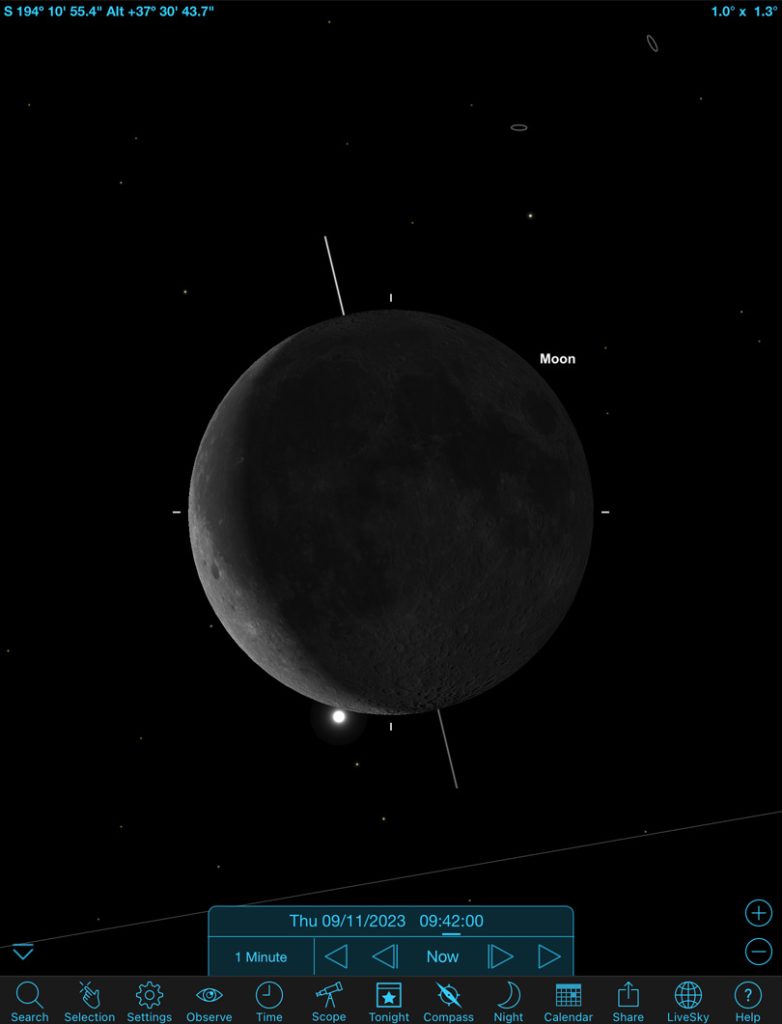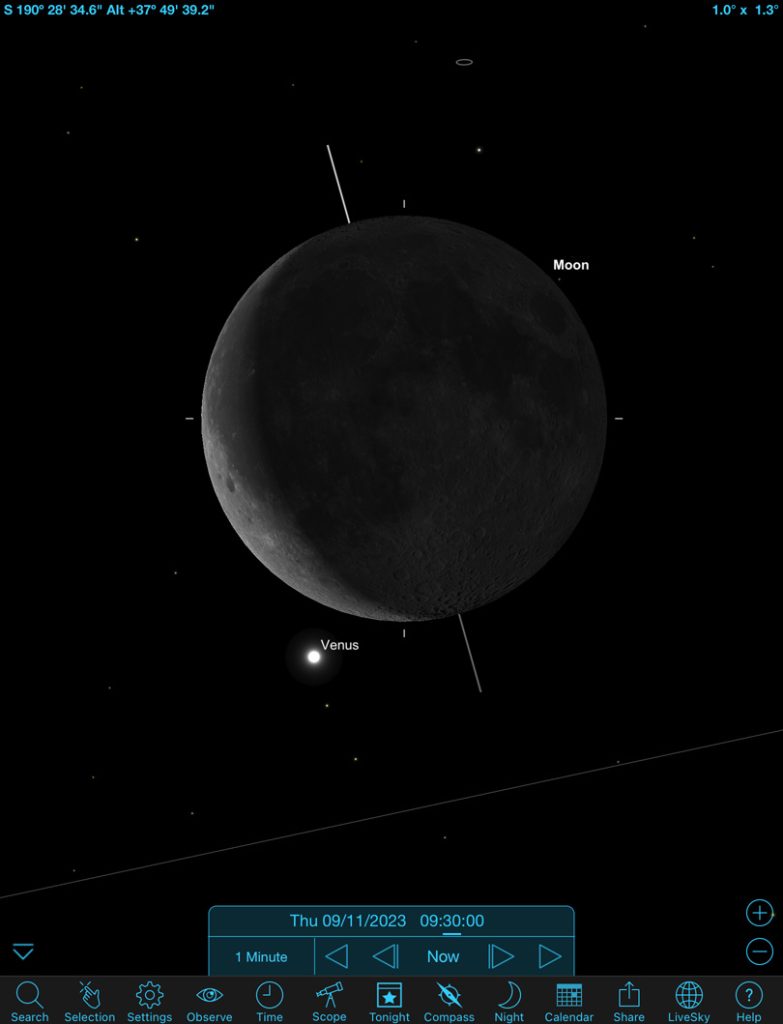2023 November 5
Occultation of Venus by the Moon on Thursday 9th November
On Thursday 9th November the Moon will pass in front of the planet Venus and for a short time the planet will be completely hidden by the moon. This is an event known as a ‘lunar occultation’. Occultations of the planets by the Moon are not that uncommon- you may recall that on 8th December 2022, the Moon occulted the planet Mars.
The reason why the planets can be occulted by the Moon is due the the paths all these objects make across the night sky. If you were to plot the position of the sun in the sky over the course of the year you be plotting the ‘ecliptic’. The moon and planets all move on, or near to the ecliptic and as a result, the moon and planets can appear to be in the same place in the sky. This gives rise to occultations and conjunctions (when the Moon and planets appear very near to each other).
The occultation of Venus by the moon will be a daylight event. The Moon will be a thin waning crescent, about 15% illuminated. Go outside at about 0930UT, and see if you can locate the crescent moon which will be approximately south west. Once you have found the moon, use binoculars to spot Venus which should be fairly close to the south west limb of the moon (in the about the 7 o’clock position- see figure 1). Venus is rather bright (apparent magnitude -4.3) and should quite be easy to spot in binoculars- although make sure you don’t look at the Sun with them!
Venus will pass behind the SW limb of Moon at about 0944UT from Leicester (see figure 2)- the exact time this occurs will vary a little across the country- you can work out when it will occur from your location using free planetarium software like Stellarium or WINJUPOS. About an hour later, Venus will reappear on the south eastern limb- but this will be unilluminated as the moon is only 15% illuminated (see figure 3).
This event will also be a nice thing to observe in a small telescope, but remember your telescope will invert the image, so if you are observing the event with a small telescope, north will be at the bottom and you should look for Venus in the 1 o’clock position at the start of the event instead.
Any observations you make of the event- images, drawings etc should be sent to Tony Cook (the Lunar Section Director) or myself. What do we mean by an observation? Well you image or drawing should have at least: the date, the time (in UT), telescope details (it’s size, type and magnification used) and the details of the camera/phone used to make the image. Also record your impressions- Venus will be 59% illuminated so a gibbous- can you see this? What happened as it passed close to them limb- did it change in brightness? Did its brightness change when it reappeared, and so on.
Hopefully the storms and bad weather will have cleared by Thursday and with luck we should get some much deserved clear skies. Good luck with your observations, and don’t forget to send them to Tony and myself- there’s absolutely no use in an observation sitting unseen on a hard drive or in a mobile phone!



| The British Astronomical Association supports amateur astronomers around the UK and the rest of the world. Find out more about the BAA or join us. |
